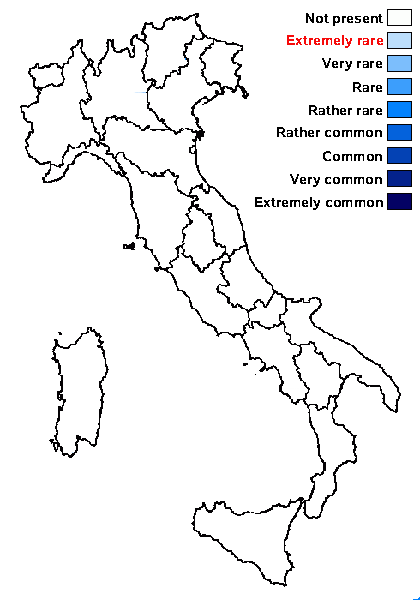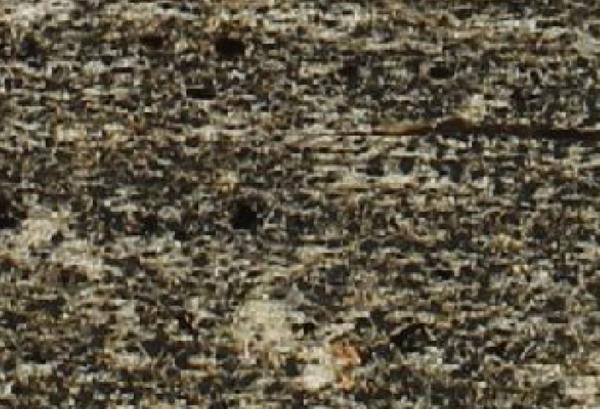Micarea rhabdogena (Norman) Hedl.
Bih. K. Svenska Vetensk. Akad. Handl., 3, 18, 3: 85, 1892. Basionym: Biatora rhabdogena Norman - Öfvers. K. Svensk. Vetensk.-Akad. Förhandl., 27: 803, 1870
Synonyms: Lecidea rhabdogena (Norman) Th. Fr.
Distribution:
Description: Thallus crustose, endosubstratic, inapparent, the hyphal walls often olivaceous green, K+ violet. Apothecia micareoid, numerous, dull black, convex, hemispherical, sometimes clustered and tuberculate, 0.1-0.2 mm across (up to 0.4 mm when tuberculate), without a distinct proper margin. Proper exciple poorly developed, pale to dark fuscous brown, K- but the pigment partly dissolving, of radiating, branched and anastomosing hyphae; epithecium well-evident, fuscous brown, N-, K-, the pigment partly dissolving in K; hymenium pale yellowish brown, 25-30 µm, K+ or K+ faintly violet; paraphyses sparingly branched and anastomosing in lower part, richly branched in upper part, c. 1 µm thick at mid-level, the apical cells up to 1.5 µm wide; hypothecium pale yellowish brown, 70-160 µm high, K-, N-. Asci 8-spored, clavate to cylindrical-clavate, with an unstained wall and a K/I+ blue outer layer and apical dome, the latter with a non-amyloid, cylindrical axial mass. Ascospores 1-celled or rarely a few 1-septate, hyaline, oblong-ellipsoid to bacilliform, 6-9 x 1.5-2.3 µm. Pycnidia black, the wall olivaceous, K+ violet, of 2 types: a) partly immersed to sessile, 40-80 µm across, producing oblong-ellipsoid to obovate mesoconidia measuring 3.5-47 x 1.4-1.8 µm; b) immersed, c. 40 µm across, producing narrowly cylindrical microconidia measuring 4-4.5 x 0.7-0.9 µm. Photobiont micareoid, the cells 4-7 μm wide. Spot tests: thallus K- or K+ faintly violet, C, KC-, P-. Chemistry: thallus and pycnidial walls with an olivaceous pigment.Note: on wood of conifers in boreal-temperate-montane/subalpine areas, often with Parmeliopsis ambigua and ecologically related species, with a single record from the Eastern Alps (Carinthia, Austria); to be looked for in the Italian Alps.
Growth form: Crustose
Substrata: lignum
Photobiont: green algae other than Trentepohlia
Reproductive strategy: mainly sexual

Predictive model

University of Wisconsin - Madison (WIS) – Determiner: K. Kalb (1988-07-30)
Collector: K. Kalb Number: 20521 Date: 1988-07-30 Additional Collectors: A. Kalb Locality: Australia, New South Wales, Blue Mountains: path between Echo Point and Carrington Park.
-33.716667 150.316667 Verbatim Coordinates: 33° 43' S 150° 19' E Elevation: 1000 meters Verbatim Elevation: 1000m Habitat: In a dry temperate forest - CC BY-NC 3.0 - Source: Consortium of Lichen Herbaria (2023) http//:lichenportal.org/portal/index.php. Accessed on December 15.
Growth form: Crustose
Substrata: lignum
Photobiont: green algae other than Trentepohlia
Reproductive strategy: mainly sexual

Predictive model

 Index Fungorum
Index Fungorum
 GBIF
GBIF

